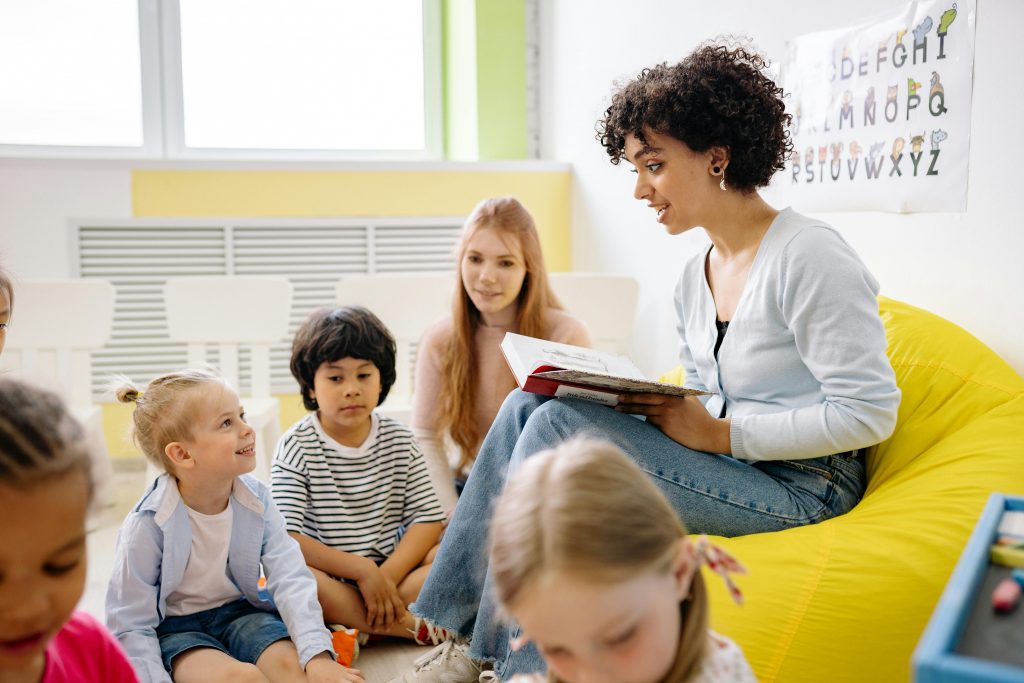In this article I want to talk about something near and dear to my heart, “Reading Books Together in Class.” This isn’t just about flipping through pages—it’s about the shared experiences, the magic of stories, and the incredible discussions that unfold.
Before I get deep into this article, I want to share a bit about what Doug Lemov says in his education article. I’m going to paraphrase here:
He cites the fact that kids are reading fewer and fewer books outside of school, that in many ELA classrooms students are reading short passages rather than books, and that the books students do read in school are often chosen to be “appealing” and “accesible” rather than for their literary merit.
Some educators believe that the content of what students read is not important – that
reading instruction should focus on developing skills that will transfer to other passages and standardized tests. Not true, says Lemov, pointing to studies showing that learning discrete
reading skills (e.g., main idea, inferencing) does not transfer across subject-matter domains or to high-stakes tests.
Lemov believes there are three more benefits to a class reading a book together. First,
understanding the narrator’s “voice” – Trustworthy? Pompous? Subtly ironic? Second, putting students in touch with important societal ideas and core knowledge – for example, knowing what a mention of Big Brother is all about.
Third, understanding the archaic syntax and vocabulary of classic books is often a
struggle, requiring students to read a passage two or three times – and that’s a good thing. “If students never read text that is more than fifty or a hundred years old,” says Lemov, “the writing of the past will slip farther and farther away from them. Do we want a society where students lack familiarity with such writing and the mindset to persist at the challenges it presents? I can’t imagine it will be a good thing when only a small number of experts can extract meaning from On the Origin of Species or the U.S. Constitution.”
Pretty eye-opening stuff, right? Imagine a classroom where students are each holding a copy of the same book. There’s a buzz of excitement as they open to the first chapter. Reading together in class isn’t just about learning to read; it’s about creating a community of readers. It’s like a mini book club where everyone gets to share their thoughts and perspectives.

Now, why is this so powerful? When students read the same book together, they’re not just learning to decode words; they’re learning to interpret and analyze stories as a group. This shared experience fosters a sense of belonging and opens up a space for rich discussions. Students can compare their interpretations, argue about characters’ motives, and even question the author’s choices. It’s like opening a treasure chest of insights that they might not have discovered on their own.
One of the biggest benefits of reading books together in class is the way it enhances comprehension. When a student reads alone, they might miss certain nuances or struggle with complex themes. But in a group, they can ask questions and hear different perspectives. A classmate might point out something they missed or explain a difficult concept in a new way. It’s a collective brainpower at work, and it’s truly amazing to witness.
Let’s not forget the social-emotional benefits. Books often tackle tough topics—friendship, conflict, love, loss. When students read about these experiences, they can relate them to their own lives. Discussing these themes in a safe, structured environment helps them develop empathy and emotional intelligence. It’s not just about the story; it’s about the human experience behind the story.
Another great aspect is the confidence boost. Some students might be shy or reluctant to speak up in other contexts, but talking about a book gives them a platform. It’s a shared reference point that everyone understands, making it easier for them to join the conversation. Over time, this can significantly build their confidence, both in their reading and their speaking skills.
Teachers play a crucial role here, acting as facilitators. They guide discussions, pose thought-provoking questions, and help students dig deeper into the text. They can also bring in supplemental materials—like historical context or author biographies—that enrich the reading experience. It’s a dynamic process where the teacher and students are co-learners, exploring the text together.
Let’s talk about the fun factor. Yes, fun! Reading together can be incredibly enjoyable. Think about the excitement of cliffhangers, the joy of unexpected plot twists, or the satisfaction of a well-deserved ending. When a class shares these moments, it creates a sense of camaraderie and collective enjoyment. Plus, incorporating activities like dramatic readings or creative projects can make the experience even more engaging.
We also can’t ignore the power of diverse perspectives. When students read books from different genres, cultures, and authors, they expand their horizons. A classroom discussion might reveal how a story resonates differently with each student based on their background and experiences. This not only broadens their understanding of the world but also teaches them to appreciate and respect different viewpoints.
Lastly, let’s touch on the long-term impact. When students develop a love for reading through these shared experiences, it often sticks with them for life. They’re more likely to become lifelong readers, which has countless benefits—from improved cognitive skills to better mental health. And who knows, maybe one day they’ll pass on this love of reading to their own children.
I want to mention a very important point here. I’m all for children having voice and choice when it comes to selecting their own reading material in our Reader’s Workshops; however, I also think is of great benefit reading a book together as a class – like a classic, a rich literary read. So, having said that, why not do both? I believe students would get so much value from this.
So, there you have it, my friend. Reading books together in class is so much more than an educational activity. It’s a journey of discovery, a means of building community, and a way to foster empathy and understanding. If you haven’t experienced it yet, I hope this article inspires you to give it a try. Reach out and let me know what you think about treading books together in class.










3 Responses
I am a retired teacher. I taught 7 years in public schools and 20 years in the Department of Defense Schools. When my students in grade 6 read a book together the discussions were very powerful! Students who didn’t particularly care about reading came alive because there were no right or wrong answers. They learned more about themselves and how others interpretations were so different from theirs. This activity can be accomplished at any grade level!!
I want to thank you for your feedback. I appreciate it very much. I agree whole heartedly, I’ve used this strategy and I found it really fostered critical thinking. Thanks again, and take great care.
Thanks so much for your feedback! this strategy opens the way up for some real critical thinking.